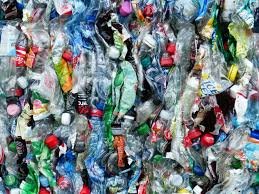Durability of Plastics
Plastic is incredibly strong, and can be molded into a mind
boggling array of stuff.But that strength also makes plastic
stick around long after we actually need it, because unlike
most materials, it simply doesn't ever fully break down.
Each type of plastic is made of one chemical unit, such as
ethylene, repeated thousands of times over in long, noodle
like strands,which is why plastics’ names all start with“poly,”
the Greek word for “many.” Quadrillions of those strands get
tangled together like cooked pasta to form everything from
saran wrap to space shuttle sheathing.

source:http://www.ttfihc.com/Products/Petrochemical/Polyethylene-PE
Over time, forces like heat and tension can separate the
tangled strands of plastic from each other, causing big pieces
of plastic to break into smaller ones.But the individual strands
themselves are glued together by thousands of carbon-carbon
bonds, which are among the strongest types of chemical
linkages: neither normal amounts of heat and pressure, nor
the other usual destructive forces, can break them.So while
large bits of plastic break apart into small bits, those small
bits never really disappear.So scientists are noodling around
for a way to create less permanent plastics.

source:https://www.rushhourdaily.com/humans-produced-9-billion-tons-plastic-less-70-years/
New versions, such as polylactide, are still made up of
repeating chemical units, but instead of those everlasting
carbon-carbon bonds,the chains are held together by different
types of links, like carbon-oxygen bonds, which can be
easily cut even by water and the resulting bits can ultimately
be digested by bacteria.So after a few dozen years out in the world
or just a few months in the right processing facility these new
plastics can degrade completely into just carbon dioxide and water.
But so far, there are some drawbacks: polylactide,for example,
is more expensive than traditional plastics, and the carbon oxygen
bonds that make it degradable also give it a fairly low softening
point, making it not so practical for some uses.
So, we still haven't cooked up the perfect plastic yet, but scientists
are excited about the pasta-bilities.
References:
http://science.sciencemag.org/content/358/6365/872
https://pubs.acs.org/doi/10.1021/jacs.7b10173
http://www.mdpi.com/1422-0067/10/9/3722
http://www.mdpi.com/1422-0067/16/1/564
http://science.sciencemag.org/content/358/6365/868